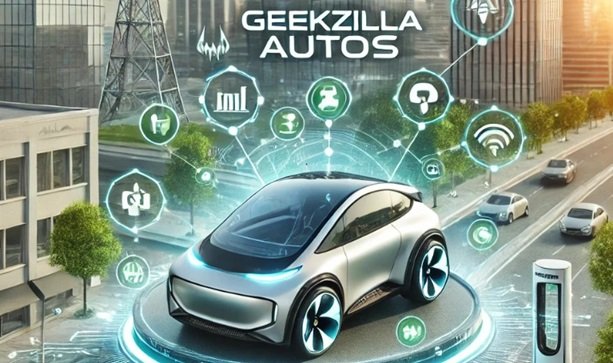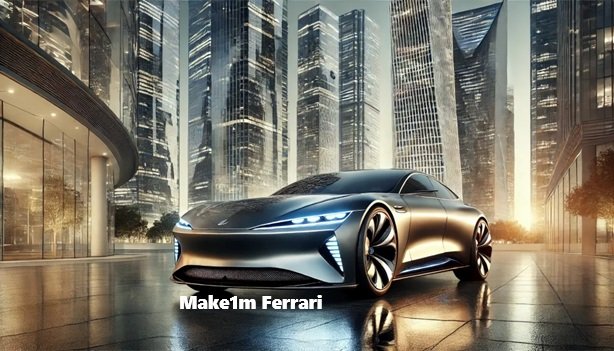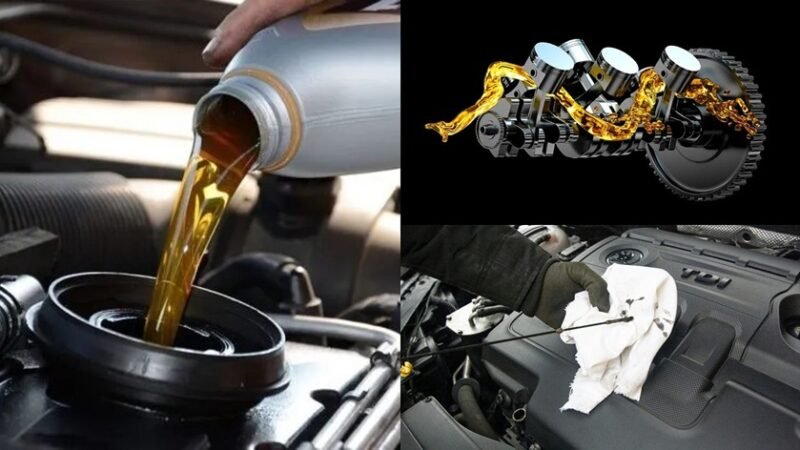The Rise of Sustainable Automotive Practices: How the Industry is Going Green

In recent years, the automotive industry has undergone a significant transformation driven by a growing awareness of environmental issues and the urgent need to reduce carbon emissions. This shift towards sustainability has led to the development of innovative practices and technologies that are reshaping the industry. From the adoption of electric vehicles (EVs) to the implementation of circular economy principles, the automotive sector is embracing a greener future. This article explores the rise of sustainable Automotive Practices and how the industry is going green.
The Shift to Electric Vehicles (EVs)
One of the most significant developments in sustainable automotive practices is the widespread adoption of electric vehicles (EVs). EVs have become a central focus for automakers as they seek to reduce the environmental impact of traditional internal combustion engine (ICE) vehicles. The transition to EVs is being driven by several factors, including regulatory pressures, technological advancements, and changing consumer preferences.
1. Regulatory Pressures:
Governments around the world are implementing stricter emissions regulations and setting ambitious targets for reducing greenhouse gas emissions. In response, many countries have announced plans to phase out the sale of new ICE vehicles within the next few decades. For example, the European Union has set a target to reduce CO2 emissions from new cars by 55% by 2030 compared to 2021 levels. Similarly, the United Kingdom plans to ban the sale of new petrol and diesel cars by 2030. These regulations are pushing automakers to accelerate their development and production of EVs.
2. Technological Advancements:
Advancements in battery technology have played a crucial role in the rise of EVs. Improvements in battery energy density, charging speed, and overall efficiency have made EVs more practical and appealing to consumers. The cost of batteries has also decreased significantly, making EVs more affordable. Additionally, the expansion of charging infrastructure, including fast-charging networks, has alleviated concerns about range anxiety, further encouraging the adoption of EVs.
3. Changing Consumer Preferences:
Consumers are increasingly prioritizing sustainability in their purchasing decisions, and this trend extends to the automotive sector. The growing awareness of the environmental impact of traditional vehicles has led to a surge in demand for EVs. Automakers are responding by offering a wider range of electric models, from compact cars to luxury SUVs, to cater to different consumer preferences. As a result, EV sales have been steadily increasing, with global EV sales reaching 10.6 million units in 2022, a 55% increase from the previous year.
The Rise of Sustainable Manufacturing Practices
In addition to the shift towards EVs, the automotive industry is also adopting more sustainable manufacturing practices. Automakers are rethinking how vehicles are produced, with a focus on reducing waste, minimizing energy consumption, and utilizing renewable resources.
1. Circular Economy Principles:
The concept of a circular economy is gaining traction in the automotive industry. Unlike the traditional linear economy, where resources are extracted, used, and discarded, a circular economy emphasizes the reuse, recycling, and repurposing of materials. Automakers are increasingly incorporating recycled materials into their vehicles and designing components that can be easily disassembled and reused at the end of their life cycle. For example, BMW’s i3 electric car features a significant amount of recycled and renewable materials, including recycled plastics and natural fibers.
2. Energy-Efficient Manufacturing:
Automakers are making significant strides in reducing the energy consumption of their manufacturing processes. Many have committed to powering their factories with renewable energy sources, such as wind, solar, and hydropower. For instance, Volvo Cars aims to have climate-neutral manufacturing operations by 2025. Similarly, Tesla’s Gigafactory in Nevada is powered by a combination of solar, wind, and geothermal energy, reducing the factory’s carbon footprint.
3. Reducing Waste and Emissions:
Efforts to reduce waste and emissions in automotive manufacturing extend beyond energy efficiency. Automakers are also implementing strategies to minimize water usage, reduce hazardous waste, and lower volatile organic compound (VOC) emissions. For example, Ford has introduced a “3-Wet” paint process that reduces VOC emissions by 25% and cuts down on water and energy consumption. Additionally, many manufacturers are adopting closed-loop recycling systems, where scrap materials from production are recycled back into the manufacturing process.
Sustainable Supply Chains
The push for sustainability in the automotive industry goes beyond vehicle production; it also extends to supply chain management. Automakers are increasingly focusing on creating more sustainable and transparent supply chains to reduce their environmental impact and ensure ethical practices.
1. Sourcing Sustainable Materials:
The automotive industry relies on a wide range of materials, many of which have significant environmental and social impacts. To address these concerns, automakers are sourcing materials that are more sustainable and ethically produced. For example, some companies are using responsibly sourced aluminum, which has a lower carbon footprint compared to traditional aluminum production. Additionally, the use of bio-based materials, such as plant-based plastics and natural rubber, is becoming more common in vehicle interiors.
2. Ethical Sourcing of Raw Materials:
The production of EV batteries relies on critical minerals, such as lithium, cobalt, and nickel, which are often associated with environmental degradation and human rights abuses in mining regions. Automakers are increasingly committed to ensuring that these materials are sourced ethically and sustainably. Companies like BMW and Tesla have taken steps to trace the origin of raw materials used in their batteries and work with suppliers to improve environmental and labor standards.
3. Reducing Carbon Footprint of Supply Chains:
Automakers are also focused on reducing the carbon footprint of their supply chains. This includes optimizing transportation logistics to minimize emissions, working with suppliers to reduce their energy consumption, and encouraging the adoption of renewable energy throughout the supply chain. For instance, Toyota has implemented a program to help its suppliers improve energy efficiency and reduce CO2 emissions, contributing to the company’s overall sustainability goals.
The Role of Autonomous and Connected Vehicles
While the shift to EVs and sustainable manufacturing practices are at the forefront of the automotive industry’s green transformation, the development of autonomous and connected vehicles also plays a role in sustainability. These technologies have the potential to reduce traffic congestion, improve fuel efficiency, and lower emissions.
1. Autonomous Vehicles (AVs):
Autonomous vehicles, which can operate without human intervention, have the potential to optimize driving patterns and reduce fuel consumption. AVs can be programmed to drive more efficiently, avoid sudden accelerations and decelerations, and choose the most efficient routes. Moreover, the widespread adoption of AVs could lead to a reduction in the number of vehicles on the road, as shared autonomous fleets become more prevalent, further decreasing emissions.
2. Connected Vehicles:
Connected vehicles are equipped with communication technologies that allow them to interact with other vehicles, infrastructure, and the cloud. This connectivity enables real-time data exchange, which can be used to optimize traffic flow, reduce congestion, and improve fuel efficiency. For example, connected vehicles can receive information about traffic conditions and adjust their speed to avoid traffic jams, leading to lower fuel consumption and emissions.
3. Mobility as a Service (MaaS):
The concept of Mobility as a Service (MaaS) is also gaining traction as part of the sustainable Automotive Movement. MaaS refers to the integration of various forms of transportation services into a single accessible on-demand service. By providing a seamless and efficient transportation experience, MaaS can reduce the reliance on personal vehicles, leading to fewer cars on the road and lower emissions.
The Future of Sustainable Automotive Practices
The automotive industry is at a pivotal moment in its history, with sustainability taking center stage. As governments, consumers, and investors increasingly demand greener practices, automakers are responding with innovative solutions that are reshaping the industry. The future of sustainable automotive practices will likely be defined by continued advancements in EV technology, the expansion of renewable energy use in manufacturing, and the development of more sustainable supply chains.
Moreover, the integration of autonomous and connected vehicle technologies will play a crucial role in reducing the environmental impact of transportation. As these technologies become more widespread, they will contribute to a more efficient, low-emission transportation system.
The road ahead is challenging, but the automotive industry’s commitment to sustainability is clear. By embracing green practices and technologies, the industry is not only reducing its environmental impact but also paving the way for a more sustainable future for generations to come.
The rise of sustainable automotive practices marks a significant shift in the industry, one that promises to transform how we think about transportation and its impact on the environment. As these practices continue to evolve, they will play a critical role in shaping a cleaner, greener, and more sustainable future for the automotive industry and the planet.





